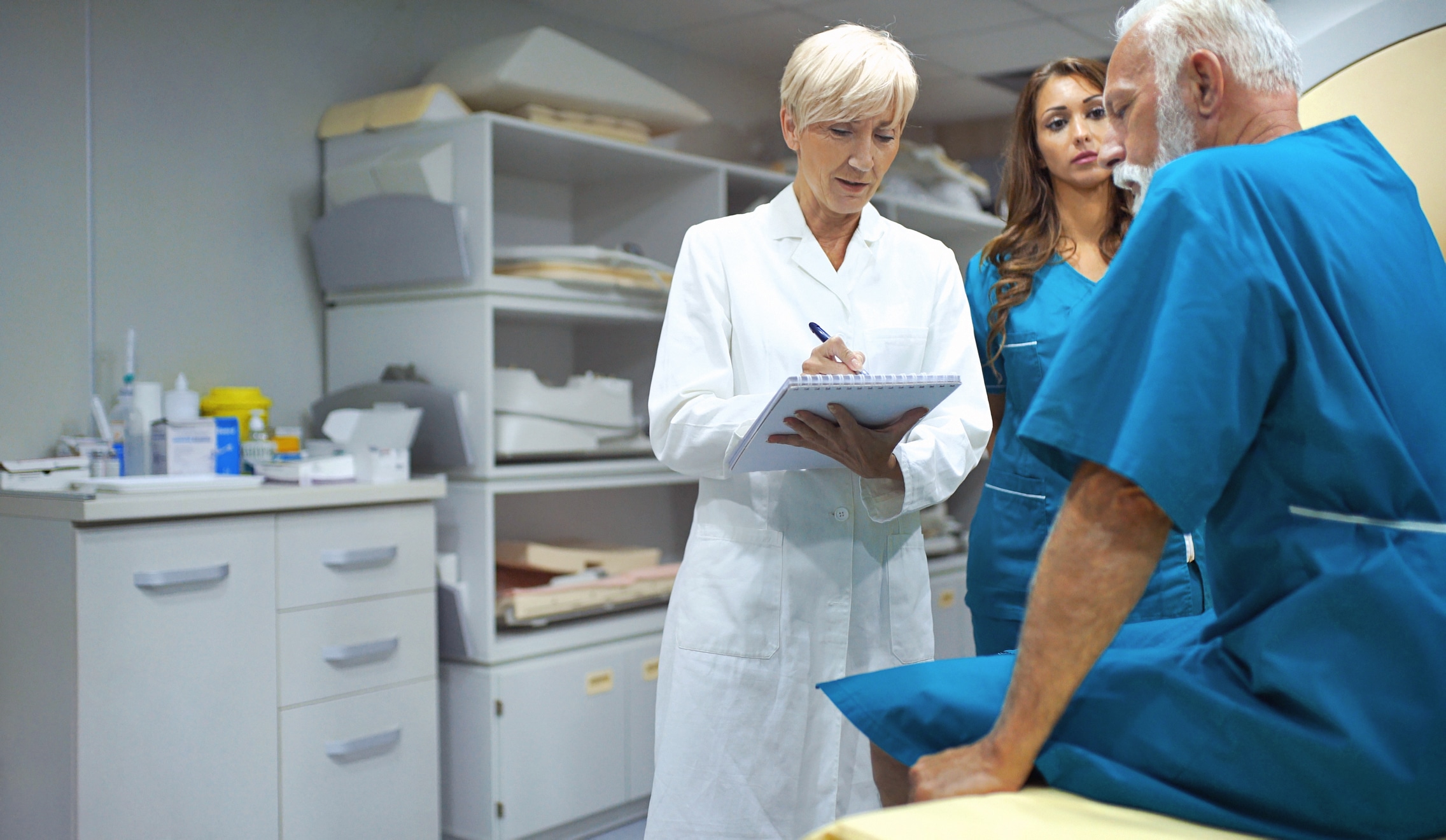What is a nuclear medicine scan?

This test uses a small amount of radioactive matter (tracer) and a special camera to form images. The tracer can be injected, inhaled or swallowed. You will need to wait a few minutes, hours or even a few days before having your scan. This allows the tracer to build up in the part of your body being studied. The heart, lungs, thyroid, gallbladder, liver, and bones are frequently imaged in the nuclear medicine suite.
Nuclear Medicine Services Offered
- Bone scan (whole body and 3-phase)
- Renal scan with Lasix
- Thyroid Uptake & Scan and I-131 Therapy
- Parathyroid Scan
- V/Q Scan
- Hepatobiliary Scan with & without ejection fraction
- MUGA Scan
- Gastric Emptying Scan
- Liver-Spleen Scan with SPECT
How to prepare for nuclear medicine scan?
Women should always inform the technologist if there is any possibility that they are pregnant or breastfeeding. Many imaging tests are not performed during pregnancy. Let your technologist know if you have had a recent nuclear medicine scan, barium study, x-ray using contrast, have any fractures or artificial joints, or any allergies. Jewelry and other metallic accessories should be left at home, or removed prior to the exam because they may interfere with the procedure.
More specific test preparations include:
- Thyroid Uptake and Scan, I-131 Whole Body Scan: No multivitamins for 2 weeks prior to the exam. No thyroid medications for 2-4 weeks depending on the type, please call. No seafood for 48 hours prior to examination. No Iodine based contrast for 4 weeks prior to examination. Please do not eat 2 hours prior to appt. Must not be pregnant.
- Hepatobiliary Scan: Nothing to eat or drink for 6 hours prior to the scan.
- Gastric Emptying Scan: Nothing to eat or drink 4 hours prior to the scan.
- Nuclear Stress Test: Nothing to eat 4 hours prior to the scan, call regarding cardiac medications. Wear a two-piece outfit, short sleeve shirt. Please bring a small snack to eat during the examination break. 3-4 hr exam. (Bring a book!)
During the Scan
If necessary, a nurse or technologist will insert an IV into a vein in your hand or arm. Most nuclear medicine procedures are painless. Depending on the type of nuclear medicine exam you are undergoing, the radiotracer is then injected intravenously, swallowed or inhaled. It can take anywhere from several seconds to several days for the radiotracer to travel through your body and accumulate in the organ or area being studied.

As a result, imaging may be done immediately, a few hours later, or even several days after you have received the radioactive material.
When it is time for the imaging to begin, you will be positioned on an examination table and the camera or scanner will take a series of images. The camera may rotate around you or it may stay in one position and you will be asked to change positions in between images. It is important that you remain still while the images are being recorded.
What to Expect After the Nuclear Medicine Scan
- Unless your physician tells you otherwise, you may resume your normal activities after your nuclear medicine scan. If any special instructions are necessary, you will be informed by the technologist before you leave the nuclear medicine department.
- Through the natural process of radioactive decay, the small amount of radiotracer in your body will lose its radioactivity over time. It may also pass out of your body through your urine or stool during the first few hours or days following the test. You should also drink plenty of water to help flush the radioactive material out of your body as instructed by the nuclear medicine personnel.
- A report from today’s exam will be sent to your doctor within 24 hours.
